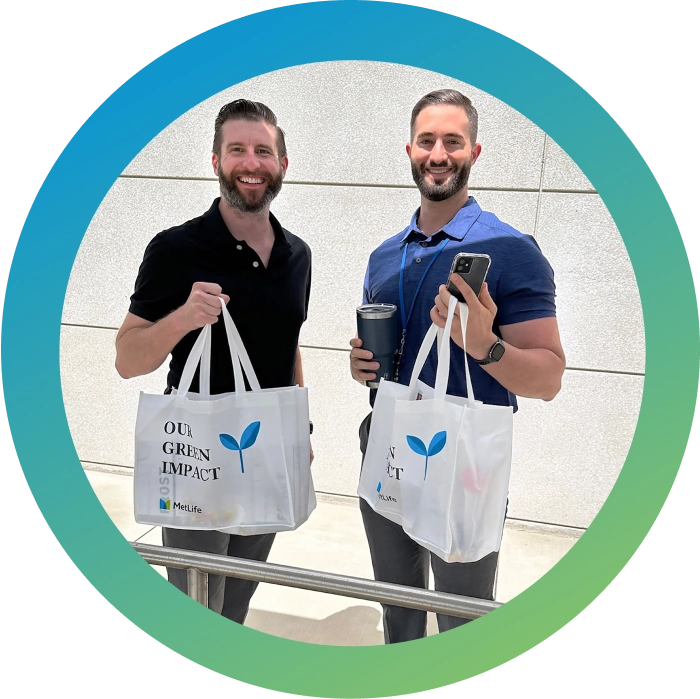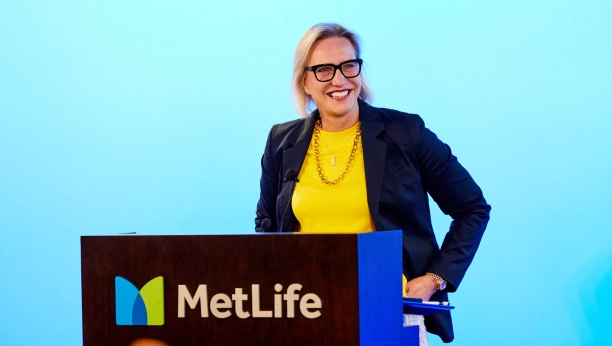Risk Management
Risk Management
MetLife is in the business of mitigating risk and protecting families and their futures. We manage risk so that individuals and communities can realize their full potential. MetLife has a well-established risk management framework that constantly evolves and is designed to address material financial and non-financial risks (including compliance risks) to our business. The program is led by an independent Global Risk Management organization headed by our Chief Risk Officer, who reports directly to MetLife’s CEO.
MetLife operates under the “Three Lines of Defense” model. Under this model, each colleague has a role to play in risk management under the company’s risk and control framework. The lines of business and corporate functions are the first and primary line of defense in identifying, measuring, monitoring, managing and reporting risks. Global Risk Management forms the second line of defense, providing strategic advisory services and effective challenge and oversight to the business and corporate functions in the first line of defense. Internal Audit serves as the third line of defense, providing independent assurance and testing over the risk and control environment and related processes and controls.
The Finance and Risk Committee of the Board of Directors oversees the assessment, management and mitigation of material risks, as well as capital and liquidity management practices. Other Board of Directors committees also have significant risk management oversight responsibilities:
- Audit: internal controls, information security and cybersecurity and relevant legal and regulatory compliance;
- Governance and Corporate Responsibility: management succession and reputation, as well as strategies, activities and initiatives related to environmental and social matters;
- Investment: portfolio risks; and
- Compensation: plan risks (e.g., avoiding incentives to take excessive risk).
The Board oversees the company’s sustainability matters, strategy and execution, including the assessment and management of various sustainability opportunities, priorities and risks. MetLife’s management provides regular updates to the Board and its committees on various sustainability matters. For more information on the Board’s committees and risk management oversight, please refer to Board Committee Information and Board of Directors.
In addition to oversight by the Board and its committees, MetLife has a management-level risk oversight structure. Material risks, including ESG risks, as appropriate, are within the purview of multiple senior management committees. MetLife’s Enterprise Risk Committee, a senior management-level committee, oversees the identification, measurement and management of material risks on an enterprise basis.
Managing Climate Risks
Climate risks, both physical and transition risks, could impact MetLife’s business operations, investments, customers and supply chain. Climate change may increase the frequency and severity of near- or long-term weather-related disasters, public health incidents and pandemics, and their effects may increase over time. Climate change regulation may impact the value of investments we or our counterparties, including reinsurers, hold, or increase our compliance costs. Our regulators may also increasingly focus their examinations on climate-related risks.
We consider how MetLife could be impacted by climate risks across the business, both assets and liabilities, by evaluating how risks could manifest across risk types, including: credit, market, insurance, operational, legal and compliance risks. We have conducted qualitative climate risk identification exercises to determine potential climate risks for key parts of the organization. In addition, we have reviewed our organizational structure to adequately manage climate risks across the three lines of defense.
MetLife continues to explore quantitative assessment and scenario analysis methods for its investments to progress our understanding of climate risks and the potential impacts on our business, strategy and financial planning. While climate risk modeling is still a nascent field with many limitations, we continue to experiment with various quantitative approaches.
We also stay up to date on policy trends and evolving regulatory requirements globally, through engagement with stakeholders.


